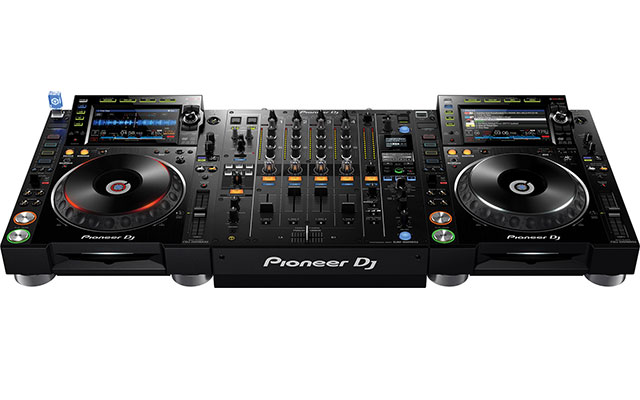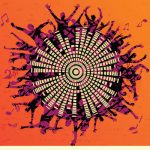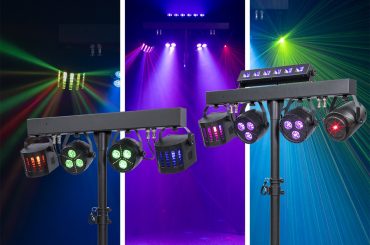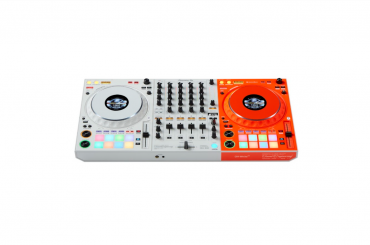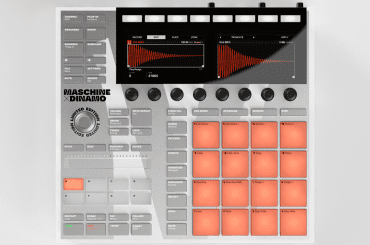When I started DJing about a decade or so ago, I was a bit of an early adopter, I suppose. I discovered an early version of one of today’s leading digital DJ software products, cobbling together a MIDI drum controller (of all things) to serve as the hardware control device for it. It wasn’t that much later that robust, purpose-built controllers started to come on the market, and I was utterly convinced that turntables and CDJs would soon be a thing of the past.
Clearly, I’d probably not make a great technology pundit or visionary, because now, 10 years later, I can see how wrong I was. For a start, about six years ago, I bit the bullet and invested in a pair of Pioneer DJ CDJs myself—which I still frequently use to this day for certain types of gigs, thanks to their flexibility. But here we are in 2016, and Pioneer has recently introduced its latest and greatest CDJ and DJ mixer offerings to a DJ community that has enthusiastically welcomed their arrival with the sort of excitement normally reserved for top echelon celebrities. After putting the new CDJ-2000NXS2 digital multi-player and DJM-900NXS2 mixer through their paces, I can start to understand why.
Getting Started: Unboxing the pair of CDJs and the mixer I received for review, I have to say my first impression was that this was serious gear, for serious DJs. I’ve used previous iterations of the DJM-900, so I already knew that the series was very highly regarded indeed, and aside from its new capabilities, was familiar. But I’ve not had the pleasure of using higher-end Pioneer DJ CDJs until now, so I wasn’t quite prepared for what came out of the boxes. For a start, they’re big—but even without powering them on or studying the manual, you get the very immediate understanding that they’re packed with capabilities (and possibilities).
Pioneer has designed everything to sit next to each other, with identical heights and depths, for a nice, finished look when it’s all assembled on the desktop. And powered up, the whole system is visually impressive.
Despite the advanced capabilities of both the CDJ-2000NXS2 and the DJM-900NXS2, any DJ who’s used Pioneer DJ’s CDJs or mixers in the past will feel immediately at home. With the CDJs, even without cracking the manual, I had no trouble getting things connected, and then getting some digital media into the device for playback. Even the touchscreen and related controls surrounding it seemed perfectly natural and intuitive. And as for the mixer? Same story—easy, fast, intuitive, and natural. This familiarity will let any DJ be immediately productive, leaving ample time later to discover and master all the new capabilities on offer in these latest-generation versions.
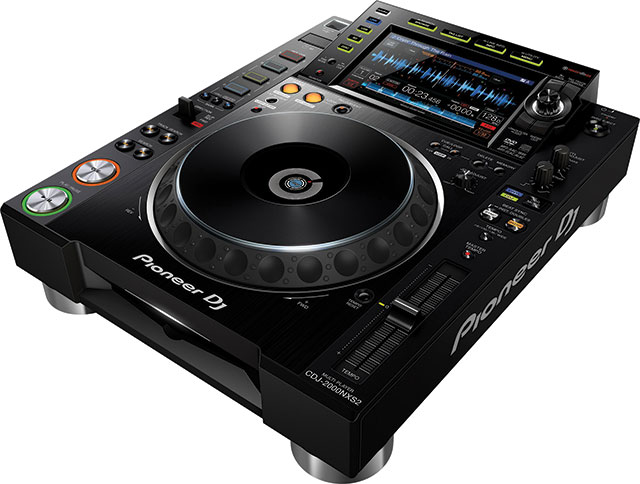
What’s New: One of the new capabilities in this latest generation of the CDJ-2000 and DJM-900 is support for 96 kHz, 24-bit audio. To take full advantage of this high-res audio support, digital connections between the CDJs and mixer are required, and to support that, SPDIF digital connections are provided on both. You can also directly connect the CDJs and/or the mixer to your computer, providing the same high-res audio I/O for content located there. (Of course, analog is still provided as well – standard stereo RCA on the CDJs, and separate line- and phono-level RCA on the mixer.)
To support the high-res audio enabled by that digital connectivity, you’ll need high-res audio content, and in addition to using material via a connected computer, the CDJ-2000NXS2 supports FLAC and Apple Lossless (ALAC), along with more traditional legacy formats (MP3, WAV, AAC, and AIFF). When you pair that high-res content with digital connectivity and a robust sound system, the results are both readily apparent, and impressive. I find that most people, me included, have simply gotten used to the quality compromises of audio compression in formats like MP3, even high bitrate MP3, and when the compromises are removed, you suddenly realize what you’ve been missing.
The quality of the audio output from the DJM-900NXS2 is supported as well by the use of a 64-bit DSP in the unit—vs. the 32-bit DSP in the previous iteration of the mixer. The extra processing power shows its benefit when enabling any of the unit’s ample array of effects. It provides both “sound color” effects like sweeps, noise, and the like, as well as the usual so-called “beat” effects like flanger, phaser, pingpong, and so on. The beat effects, in particular, are supported by a range of control capabilities, thanks to an X-pad selection of beat duration, plus selectable frequency range of application. This provides the ability to apply a flanger, for instance, in the midrange, or echoes to the high-end, enabling unique results that even the most capable digital DJ software applications (generally known for more robust effects than are usually available in hardware offerings) would be hard-pressed to match. And given the crispness and clarity of the audio when the effects are applied? Clearly Pioneer DJ is setting a new standard here.

If by chance the onboard effects are somehow deemed inadequate, the mixer also provides support for offboard effects units of the conventional type, as well as unique support for using an iPad as an effects unit. Pioneer DJ has made its RMX-1000 available in app form; install it on an iPad, and connect that iPad to the mixer, and voila, you’ve extended the mixer’s capabilities into even more territory.
The DJM-900NXS2 also provides excellent support for DJ handoffs. With dual USB ports, you can have two laptops connected to the unit if desired and, coupled with four channels of input, each able to support any input type (including phono); I can envision no playback or content source scenario where two DJs transitioning could possibly step on each other’s toes while maintaining a seamless program for the audience—especially if the CDJ-2000NXS2s are sitting to either side of the mixer.
Finally, back to those CDJs… Between the support for such a wide range of media (USB mass storage devices, SD cards, Pro DJ Link, audio CDs, CD-ROM, DVD-ROM, and computer-sourced material) and the large, beautiful, and effective touchscreen displays, I found them to be a pleasure to use. And by employing Pioneer DJ’s rekordbox software to pre-process material, you can unlock even more capabilities in the unit when it comes to managing and playing back that content.
Conclusions: As I said at the outset, the CDJ-2000NXS2 and DJM-900NXS2 are together serious gear for serious DJs. They’re a pleasure to use, and as I said earlier, easy, natural and intuitive to use despite the wide array of advanced capabilities.
Bear in mind that the street pricing for these bad boys is roughly $2,200—each. As tested, my configuration then was roughly $6,500 worth of hardware, representing a very significant investment no matter how you slice it. But for that investment, you get unparalleled capability and flexibility, and what many DJs I know consider the gold standard in DJ hardware. Which is why, despite the price, reaction to this new gear has been strong, and no doubt you’ll be seeing them show up in more and more venues—and in the performance riders (if not road cases) of leading touring DJs—in the months ahead.


